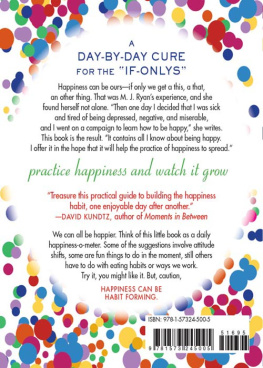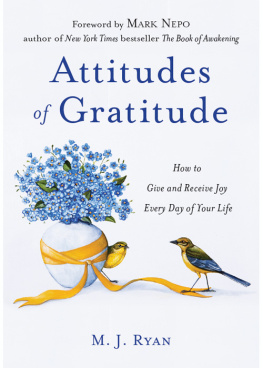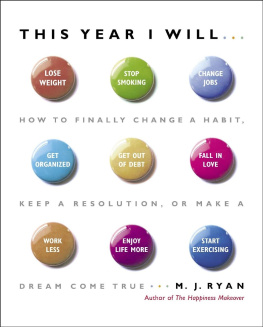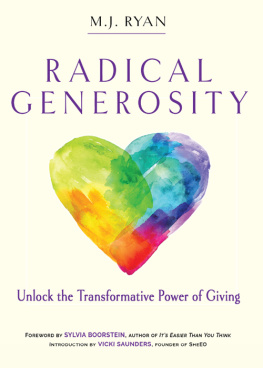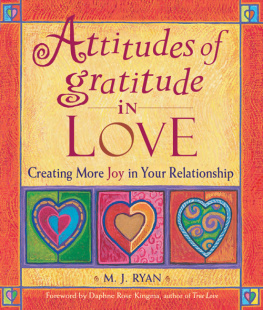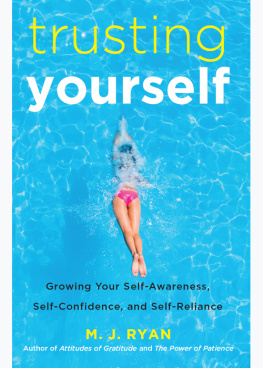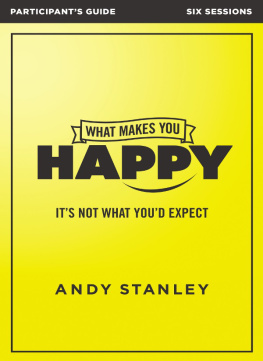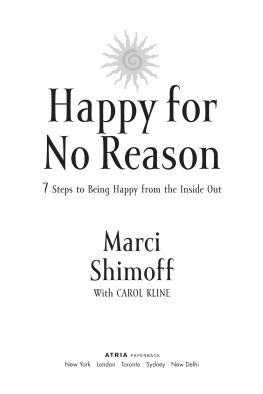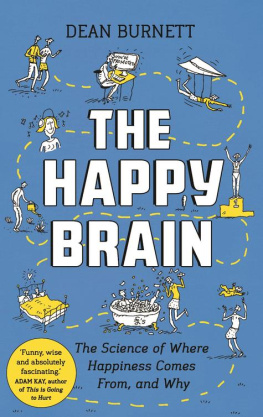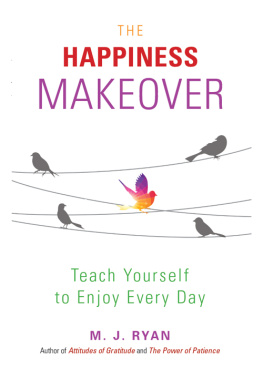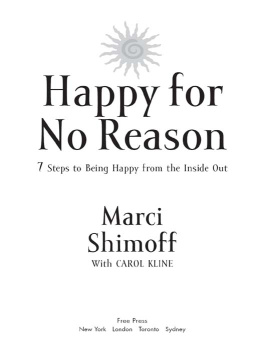
Additional Praise for
365 Health and Happiness Boosters
M.J. Ryan proves it againthis time better than ever: the brief, simple, and genial way to self-improvement is the most effective. You'll treasure this practical guide to building the happiness habit, one enjoyable day after anotherespecially if your happiness quotient needs a boost.
David Kundtz, author of Everyday Serenity
My heart lifted as I held this little book full of wisdom and positive insights. The book allows you to gently reflect on the good things in your life and set your sails, with greater confidence, for the new shores you wish to explore.
Mary Ellen, author of Expect Miracles
By giving us daily happiness activities that touch our hearts and souls, M.J. Ryan empowers each of us to experience the joy of living and, ultimately, the joy of being alive, no matter what.
Jackie Waldman, author of The Courage to Give and Teens with the Courage to Give

Contents
First published in 2000 by
Conari Press
Distributed by Red Wheel / Weiser, LLC
With offices at:
665 Third Street, Suite 400
San Francisco, CA 94107
www.redwheelweiser.com
Copyright 2000 by Conari Press
All rights reserved. No part of this publication may be reproduced or transmitted in any form or by any means, electronic or mechanical, including photocopying, recording, or by any information storage and retrieval system, without permission in writing from Red Wheel / Weiser. Reviewers may quote brief passages.
Note: The suggestions expressed in this book are in no way to be considered a substitute for consultation with a licensed physician. Any use of the recommendataions in the following pages is at the reader's discretion and sole risk.
Cover design: Jim Warner
Book design: Claudia Smelser
Interior illustrations: Joan Carroll
ISBN: 978-1-57324-500-5
Library of Congress Cataloging-in-Publication Data
Ryan, M.J. (Mary Jane)
365 health and happiness boosters / M.J. Ryan. p. cm.
ISBN: 1-57324-500-3
1. HappinessProblems, exercises, etc. I. Title: three hundred sixty-five health and happiness boosters. II. Title: three hundred sixty-five health and happiness boosters. III. Title.
BF575.H27.R93 2000
J58dc21
99-088973
Printed in Canada
TCP
15 14 13 12 11 10 9 8
Life is short and it's up to you to make it sweet.

Sadie Delany,
coauthor of Having Our Say
A Little Course in Happiness
What we nurture in ourselves will grow; that is nature's eternal law.
Anonymous
Happiness, the sheer joy of being alive, is something we all long to experience. Indeed, it is such an important shared value that the Declaration of Independence identifies it as one of only three unalienable rights: life, liberty, and the pursuit of happiness.
I'm relatively new to the pursuit of happiness. Or rather, I may have pursued it all my life, but only recently have I begun to experience it on anything that could be considered a consistent basis. That's because, like so many of us, I wasn't taught how to be happy. In fact, like most of us, I was misinformed as to where happiness lies. I was led to believe that some people were born happy and others were not, and there wasn't anything you could do about that. I was taught that happiness came from doing well in school, having the right job, the perfect mate, the dream house, the $30,000 BMW. I was taught to focus on all that was wrong in my life, all the ways I had been victimized and abused, instead of paying attention to what was working, what was right about me. I was trained in if onlysif only my mate would come home from work earlier I'd be happy; if only I made $20,000 more a year I'd be happy; if only I didn't have to work I'd be happy. I spent my time trying to make my if onlys come true and complained bitterly if they did not.
Then one day I decided that I was sick and tired of being depressed, negative, and miserable, and I went on a campaign to learn how to be happy. You're holding the results of my ten years of learning. It contains all I knowfrom the completely frivolous to the profoundabout being happy. I offer it in the hope that it will help the practice of happiness to spread.
Because I'm not alone. According to research, about two-thirds of us don't know how to be happy. In 1957, in the United States, a study was done in which people were asked whether they were happy with what they had in life. Around 30 percent said yes. The study was repeated in 1992 and the same percentage said yes, despite the fact that the standard of living had increased dramatically in that time. What this shows, besides that possessions can't make us happy, is that about one-third of the population knows the secret to happinessthat it is an inside job, and is not contingent on possessions, status, or even life circumstances. Whether from inherited temperament, early childhood training, or conscious cultivation, those people are happy. Fortunately the rest of us can learn.
That is the assumption behind this bookthat you can be happier, no matter who you are or what challenges you face. A great deal of how to be happier has to do with changing your outlook, but it also has to do with what you eat, how you interact with others, even how well you sleep.
Most of the other books on happiness are some person's theory of what you need to do to become happy. This book is different. Rather than theory, it offers 365 concrete things you can do, just for today, to experience happiness. The reason I've structured it this way is that I believe that we need to experience happiness on a daily basis, rather than just as peak moments on special occasionsour wedding, a trip to an exotic place, the birth of a child. Indeed, research confirms that the best path to happiness is a daily one. As Edward Diener, a University of Illinois researcher specializing in happiness, said recently in the Santa Barbara News-Press, Happiness is how frequently you're happy, not how intensely.
Hence the daily format. Some of my suggestions involve attitudes that we can change to create more happiness overall in our lives; others are concrete things we can do to lift our spirits in the moment; still others are environmental changes or nutritional supplements we can try. Some are lighthearted, others quite serious. All will have positive effects on our minds, bodies, and spirits. That's because our minds and bodies are not really separate, and as science has begun to demonstrate, experiencing positive emotions such as happiness strengthens the immune systems, which enables the body to resist disease and recover more quickly from illness, through the release of endorphins and other compounds into the bloodstream. Not only are endorphins the body's natural painkillers, they also stimulate dilation of the blood vessels, which leads to a relaxed heart.
Conversely, negative emotions, such as worry, anger, and fear, reduce the number and slow the movement of disease-fighting white cells in the bloodstream, and contribute to the development of stroke and heart disease by dumping high levels of adrenaline into the blood. Adrenaline constricts blood vessels, particularly to the heart, raising blood pressure and potentially damaging arteries and the heart itself.
Next page
